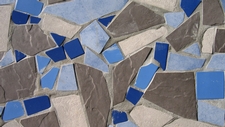Shape

TEKS Objective
Classify matter by physical properties, including shape, relative mass, relative temperature, texture, flexibility, and whether material is a solid or liquid.
Essential Understanding
The student knows that matter has physical properties and those properties determine how it is described, classified, changed, and used.
Science Background
Young Children’s Ideas About Geometric Shapes: Douglas H. Clements and Julie Sarama (PDF) - Recognizing shapes is a fundamental math and science skill. This article explains how and why children learn to identify and distinguish among different shapes.
Young Children's Ideas About Geometric Shapes
Douglas H. Clements and Julie Sarama
Signature Lesson
Practice Geometry with Shape Riddles: Education.com (website) - Students work in pairs, with one giving clues to describe the properties of a shape while the other attempts to guess the name of the shape.
- Supporting Lessons
- Extensions
- Assessment Ideas
- Literature Connections
- Related
TEKS - Additional Resources
Supporting Lessons
Ship Shape: Utah Education Network (website) - Students create geometric figures after describing and classifying various shapes.
Elaboration Lessons and Extensions
2nd Grade Geometry Lesson Plan-Shapes: Juab School District (website) - Students describe and classify plane and solid geometric figures based on the number of sides and angles or faces, edges, and vertices.
2nd Grade Geometry Lesson Plan-Shapes
Juab School District, https://www.juab.k12.ut.us
Assessment Ideas
Provide students with a variety of common items (cereal box, baseball, etc.) and each student to describe the shape of each object, using specialized “shape” vocabulary (rectangle, cylinder, etc.) from the Signature Lesson.
Literature Connections
I See Shapes. Fries, M. (ISBN-13: 978-0916119867)
The Shape of Me and Other Stuff. Dr. Seuss (ISBN-13: 978-0394826875)
Circles, Triangles, and Squares. Hoban, T. (ISBN-13: 978-0027448306)
Arrow to the Sun. McDermott, G. (ISBN-13: 978-0140502114)
Grandfather Tang’s Story. Tompert, A. (ISBN-13: 978-0517885581)
Math Magic Shape and Pattern. Clemson, W. (ISBN-13: 978-1854348760)
Round is a Mooncake. Thong, R. (ISBN-13: 978-0811826761)
The Silly Story of Goldie Locks and the Three Squares. Maccarone, G. (ISBN-13: 978-0590543446)
Additional Resources
Venn Diagram Shape Sorter: Interactivate (website) - Students work independently in class or at home to sort shapes in this interactive Venn diagram.
Venn Diagram Shape Sorter
Interactivate, http://www.shodor.org
TEKS Navigation
Grade 2
Need Assistance?
If you need help or have a question please use the links below to help resolve your problem.

Comments